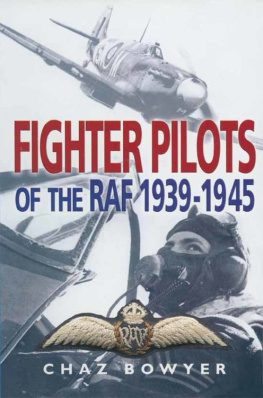Mark Barber - RAF Fighter Command Pilot: The Western Front 1939–42
Here you can read online Mark Barber - RAF Fighter Command Pilot: The Western Front 1939–42 full text of the book (entire story) in english for free. Download pdf and epub, get meaning, cover and reviews about this ebook. year: 2012, publisher: Osprey Publishing, genre: Non-fiction. Description of the work, (preface) as well as reviews are available. Best literature library LitArk.com created for fans of good reading and offers a wide selection of genres:
Romance novel
Science fiction
Adventure
Detective
Science
History
Home and family
Prose
Art
Politics
Computer
Non-fiction
Religion
Business
Children
Humor
Choose a favorite category and find really read worthwhile books. Enjoy immersion in the world of imagination, feel the emotions of the characters or learn something new for yourself, make an fascinating discovery.
- Book:RAF Fighter Command Pilot: The Western Front 1939–42
- Author:
- Publisher:Osprey Publishing
- Genre:
- Year:2012
- Rating:5 / 5
- Favourites:Add to favourites
- Your mark:
- 100
- 1
- 2
- 3
- 4
- 5
RAF Fighter Command Pilot: The Western Front 1939–42: summary, description and annotation
We offer to read an annotation, description, summary or preface (depends on what the author of the book "RAF Fighter Command Pilot: The Western Front 1939–42" wrote himself). If you haven't found the necessary information about the book — write in the comments, we will try to find it.
Mark Barber: author's other books
Who wrote RAF Fighter Command Pilot: The Western Front 1939–42? Find out the surname, the name of the author of the book and a list of all author's works by series.
RAF Fighter Command Pilot: The Western Front 1939–42 — read online for free the complete book (whole text) full work
Below is the text of the book, divided by pages. System saving the place of the last page read, allows you to conveniently read the book "RAF Fighter Command Pilot: The Western Front 1939–42" online for free, without having to search again every time where you left off. Put a bookmark, and you can go to the page where you finished reading at any time.
Font size:
Interval:
Bookmark:
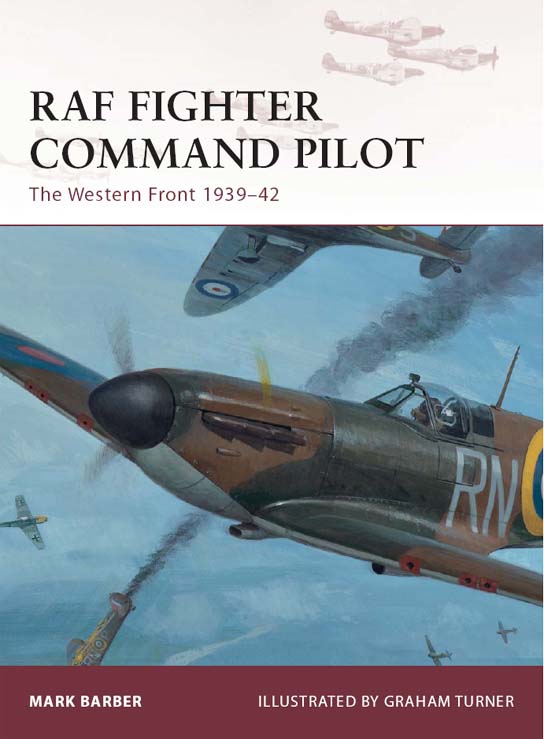
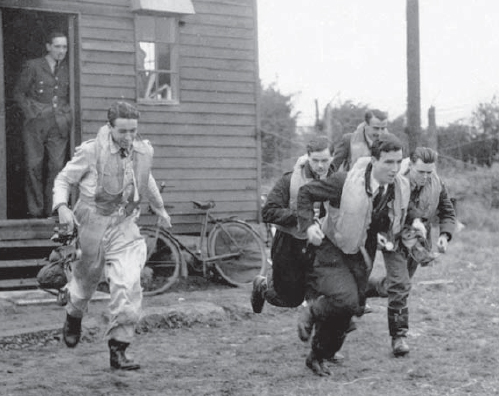
| MARK BARBER | ILLUSTRATED BY GRAHAM TURNER |
| Series editor Marcus Cowper |
When war broke out in 1939, not only was the Royal Air Force (RAF) the junior service among Britains military forces, but military aviation was still in its infancy, and the era before manned, powered flight was still well within living memory. The RAF had been formed in the closing stages of World War I, when the Royal Naval Air Service and the Armys Royal Flying Corps were amalgamated on 1 April 1918. The 59 fighter squadrons, or scout squadrons as they were then known, were based along the Western Front, with a further 16 tasked with defending the home front. Immediately following the Armistice, the RAF, like the other services, experienced enormous cutbacks as the military stepped down from a war footing and the vast majority of service personnel returned to civilian life. The RAF was reduced from being the worlds largest air force at its inception, with some 290,000 personnel and 3,500 aircraft, to losing 90 per cent of its manpower in the post-war demobilization. Peacetime strength was planned at less than 30,000 officers and other ranks and, by 1920, the RAF consisted of only 25 squadrons of all types of aircraft.
The vast war-weariness that swept across the nation in the post-war years permeated parliament, leading to the Ten Year Rule guideline. This was adopted by the British Government in August 1919 and stated that the armed forces should be formed and maintained on the assumption that the British Empire would not be involved in any major wars for the next decade. This had as much a profound effect on the fighter arm of the RAF as on every branch of all three services by the late 1920s, technological development of fighter aircraft had slowed to such a pace that the vast leaps made during World War I were reduced to a mere trickle. The Sopwith Camels and SE5as that the RAF used at the time of the Armistice had been replaced only by Gloster Gamecocks and Bristol Bulldogs open-cockpit biplanes with a similar armament and only marginally superior performance to their Great War ancestors. There had been some optimism for the fighter squadrons of the RAF in April 1923, when recommendations by the SteelBartholomew Committee on the Air Defence of Great Britain led to the establishment of a strength of 52 squadrons for Home Defence, 17 of which would be fighter squadrons. These would fall under the command of the Air Defence of Great Britain (ADGB) that was established in 1925 under Air Marshall Sir John Salmond. However, the 52 squadron plan was deferred. Originally to be implemented with as little delay as possible in 1923, two years later it was judged far less urgent, and put back to 193536. Furthermore, the low number of fighter squadrons within the total plan indicated a clear and obvious preference for funding bomber squadrons. This was articulated in November 1932 during Stanley Baldwins famous speech to the House of Commons: In the next war you will find that any town within reach of an aerodrome can be bombed within the first five minutes of war to an extent inconceivable in the last war. I think it is well also for the man in the street to realise that there is no power on earth that can protect him from being bombed, whatever people may tell him. The bomber will always get through.
Hampered by the global depression, the plan was delayed again in December 1929, and then again in May 1933, by which time the first stirrings of another major war were beginning as Adolf Hitler had been democratically elected in Germany only two months previously. By 1934 Germany was emerging as a clear threat, with British Intelligence well aware of Hitlers rearmament programme in defiance of the limitations laid down by the Treaty of Versailles. Britain finally began plans for a more effective rearmament, although for the RAF this would still be dominated by the bomber. In July 1934 the British government adopted the new Scheme A, which planned for 84 squadrons, 28 of which would be fighter squadrons, to be effective by March 1939. Scheme C came into effect in May 1935, and called for 123 squadrons, including 35 fighter squadrons, to be in service by the end of March 1937. Critically, Scheme C also radically altered the entire command and control structure of the RAF to enable functional and administrative control over the newly proposed strength. The ADGB was dissolved and four new Commands were created: Training, Coastal, Bomber and Fighter.
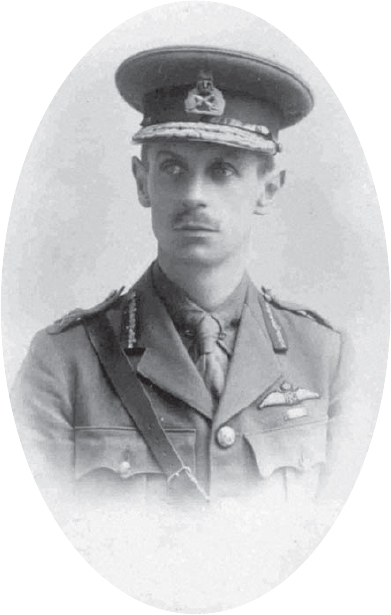
Promoted to Air Chief Marshall in 1937, Hugh Dowding commanded RAF Fighter Command at the outbreak of the war. Here photographed as an officer in the Royal Flying Corps during World War I, Dowding had experience of front-line squadron command. (RAF Museum, PO23092)
Fighter Command became operational on 14 July 1936, under Air Marshall Sir Hugh Dowding at RAF Bentley Priory. Dowding had commanded No. 16 Squadron RFC on the Western Front during World War I, but after altercations with General Hugh Trenchard, overall commander of the RFC, Dowding spent the last two years of the war in Great Britain, albeit with the rank of brigadier. Dowdings new Fighter Command was made up of four groups No. 11 and No. 12 (Fighter) Groups, No. 22 (Army Co-operation) Group and the Observer Corps. Dowding made two major contributions to the development of Britains aerial defence. First, he pushed for the development of modern, fast and heavily armed fighters to replace his force of soon-to-be-obsolete biplanes. Dowding engaged in talks with Hawker and Supermarine about the need for a modern, fast, monoplane fighter effectively to combat the worrying reports of world-class fighters and bombers being developed in Germany. He also developed Britains network of fighter defence, which would become known as the Dowding System. This involved heavy investment in Radio Direction Finding (RDF) or radar as it would become known partnered with the Observer Corps and command centres to build a picture of incoming threats before effectively controlling Fighter Command via raid plotting and radio control. Although he had his critics, Dowdings system would soon be proved absolutely integral to the defence of the entire nation.
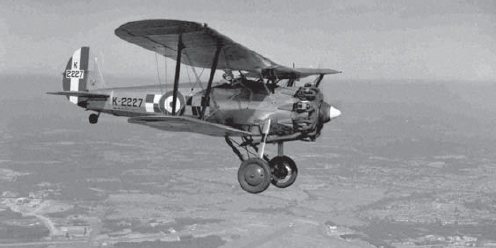
Indicative of the technological standard of aircraft employed by the RAF throughout the inter-war period, the Bristol Bulldog was an open-cockpit, fixed undercarriage, two-gun biplane with a fixed pitch propeller. Still equipping squadrons into the 1930s, the Bulldog was similar in many respects to its Great War predecessors. (RAF Museum, PC71-66-83)
When Dowding took charge of the new Fighter Command he controlled a mere 18 fighter squadrons equipped with open-cockpit, two-gun biplanes. While the development of the fighter had still not come a long way since 1918, Britain was by no means alone in its stagnancy. While also rushing to develop a modern, monoplane fighter, in early 1936 Germany was employing similar types of aircraft to the RAF. All this was about to change for both nations; the eight-gun, monoplane Hawker Hurricane had carried out its initial test flight on 6 November 1935 and on 3 June 1936, the Air Ministry placed orders for 600 Hurricanes for Fighter Command. Only shortly behind chronologically was the Supermarine Spitfire, whose first prototype was flown on 5 March 1936 in response to Air Ministry Specification F.5/34, calling for an eight-gun, enclosed cockpit, retractable landing gear, monoplane fighter the same call to arms which had spurred Hawker into action. F.5/34 demanded, in effect, a fighter to shoot down bombers. Speed, rate of climb and firepower were essential, whereas manoeuvrability was secondary. Scheme F approved on 25 February 1936, promised to deliver 123 squadrons to the RAF by the end of March 1939; 30 of these would be fighter squadrons, made up of 500 Hurricanes and 300 Spitfires.
Font size:
Interval:
Bookmark:
Similar books «RAF Fighter Command Pilot: The Western Front 1939–42»
Look at similar books to RAF Fighter Command Pilot: The Western Front 1939–42. We have selected literature similar in name and meaning in the hope of providing readers with more options to find new, interesting, not yet read works.
Discussion, reviews of the book RAF Fighter Command Pilot: The Western Front 1939–42 and just readers' own opinions. Leave your comments, write what you think about the work, its meaning or the main characters. Specify what exactly you liked and what you didn't like, and why you think so.

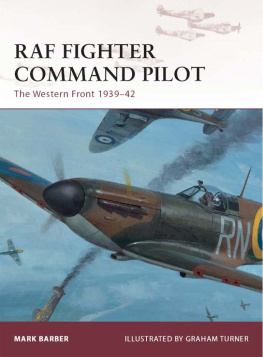

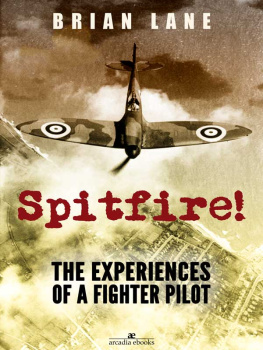
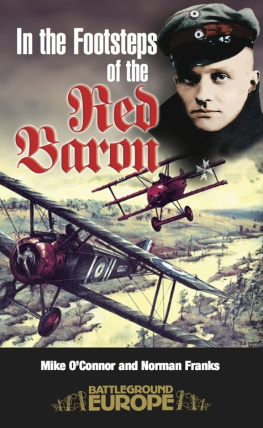
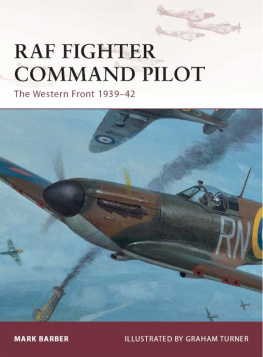
![Bar Wing Commander Guy P. Gibson VC DSO - Enemy Coast Ahead [Illustrated Edition]](/uploads/posts/book/180257/thumbs/bar-wing-commander-guy-p-gibson-vc-dso-enemy.jpg)

